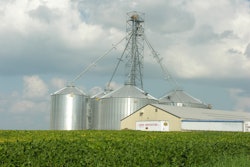In August 2010, the Food and Drug Administration (FDA) published a long-awaited Compliance Policy Guide (CPG) onSalmonellain feed. CPGs provide to FDA’s field staff interpretations of laws and regulations and represent current thinking on enforcement and compliance. For the first time since 1975, the agency completely overhauled its stance and agreed to separate human food from animal feed with respect to enforcement ofSalmonellaregulations.
This conclusion is consistent with long-standing science documenting that pathogenicSalmonellain feed is rare for both animal and human health. However, additional research is needed to confirm this approach and further develop regulatory policies surroundingSalmonella.
To help the industry and government reach a science-based consensus, the Institute for Feed Education & Research (IFEEDER), a 501 (c)(3) charitable foundation formed to address future challenges to the feed industry, has made a charitable donation to theSalmonellain Feed Research Coalition. Their donation will leverage additional funding to support surveys, lab tests and field tests at the Food and Feed Safety Research Unit at the Southwest Plains Area lab in College Station, TX.
FDA updatesSalmonellaguidelines
For nearly 35 years, the FDA has stated that feed found to have anySalmonellaserotype (a distinct variation within a subspecies of bacteria) present would be deemed adulterated. However, according to Richard Sellers, corporate secretary, IFEEDER, the commonSalmonellaserotypes found in feed are generally not pathogenic in animals and are even less likely to be pathogenic in humans.
The agency’s former stance, a no-holds-bar approach to regulatingSalmonella, was neither science based, nor good for industry.
“In 2008 the FDA detected [a nonpathogenic]Salmonellain several canola meal shipments from three of the largest suppliers in Canada,” Sellers says. “The FDA seized and held those shipments, costing our dairy industry $127 million in New England alone.”
Unfortunate situations due to poor policy-making, like the dairy example, prompted the FDA to issue a newSalmonellaCPG last summer, taking a brand new approach to regulatingSalmonellain feed.
“There are someSalmonellastrains, as outlined in the new CPG, that are more of a human food safety concern than an animal feed safety concern,” says Steve Traylor, global director of regulatory affairs, Alltech. “It’s taken years of education, both by the American Feed Industry Association (AFIA) and other trade associations, for FDA to consider a serotype-specificSalmonellaregulation, and it’s a huge victory for the industry and for science.”
Now,Salmonellais appropriately broken into allowable serotypes by species, clearly outlined for poultry, beef, dairy, horse and sheep feed.
The FDA is close to finalizing the CPG, but although it’s viewed as a victory for the feed industry, there is still more research needed to fully understandSalmonella's impact on the safety of our food supply.
“We’re pleased with the outcome of this policy, but as it was developing, we realized we needed more information onSalmonellato make truly sound regulations,” says Sellers. “The data onSalmonellain feed over the last 15 years is pretty lean, so we’d like to leverage some funding to researchSalmonellaand its various serotypes.”
Feed industry seeks answers
In 2007, the Food and Agricultural Organization (FAO) and World Health Organization (WHO) released an experts meeting report titledAnimal Feed Impact on Food Safety.The report noted there was not sufficient data to draw conclusions about the carryover ofSalmonellafrom feed to food.
Much of the uncertainty revolves around the pathogencity of differentSalmonellaserotypes. Although the FDA’s CPG lays out the specific serotypes that will be regulated in feed, there are many lesser-knownSalmonellacharacteristics yet to learn about. The main questions are which serotypes pose a risk to human health and at what level does the risk become serious.
“One of our objectives is to find the distinction between pathogenicSalmonellaand nonpathogenicSalmonella,” says Sellers. “But it’s going to take work because pathogenicity depends on level of exposure, duration of exposure and other factors. Additionally,Salmonellais an incredibly adaptive bug and mutates rapidly, therefore different genetic variations — even within a serotype — may be pathogenic at one farm and harmless at another.”
IFEEDER starts coalition
In response to the need for moreSalmonelladata, IFEEDER and other industry organizations including the National Grain and Feed Association, Canola Council of Canada, the National Renderers Association and U.S. Poultry and Egg Association, formed theSalmonellain Feed Research Coalition.
This summer, the coalition will hold its first meeting among FDA, academia and other industry stakeholders to identify the most crucial gaps in information and formulate ways to gather the data.
“When you work with salmonella and you start to look for data, it usually raises more questions than answers,” says Sellers. “We’ll likely start by taking an anonymous survey of feed and feed ingredients from around the United States to find out what types ofSalmonellaare actually in the marketplace. IFEEDER’s $15,000 donation will leverage another $60,000, and that funding will carry the project for about two years.”
Using the data from the survey, a research team within the coalition consisting of scientists from academia, USDA-Agriculture Research Service (ARS) and industry will collectively decide a research protocol, collect the necessary samples, analyze the data and decide what should be done with the results.
World looks to U.S. for policy guidance
Alltech’s Traylor hopes the results lead to more effective regulations for the industry and consumers, both domestically and abroad.
“The work being done by theSalmonellain Feed Research Coalition will lead to more effective regulating that doesn’t disregard the scientific knowledge available,” says Traylor. “The amazing thing is this is also going to reach out into the international market because a lot of foreign regulatory bodies are looking to the FDA for guidance, as the United States is one of the leaders in food and feed safety.”
IFEEDER and the rest of theSalmonellain Feed Research Coalition will remain dedicated to securing the safety of the world’s food and feed supply through its donations to the project.





















